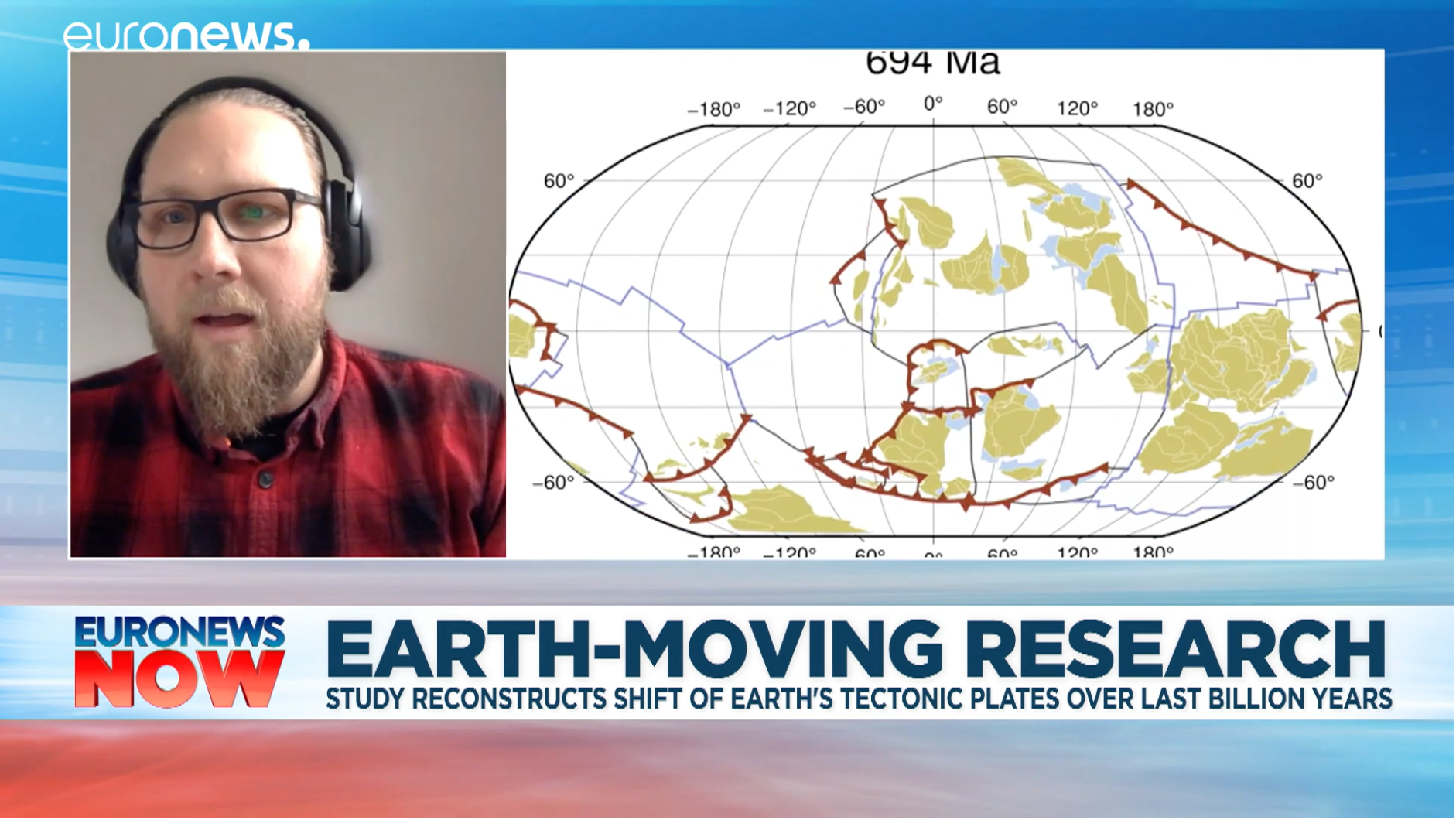
New research shows how the earth’s tectonic plates have shifted over the last billion years.
Tectonic plates are irregular-shaped slabs of solid rock which can vary massively in size from a few hundred to thousands of kilometres across.
Heat from radioactive processes within the planet’s interior causes the plates to shift. And this movement creates basins that fill to become oceans. Tectonic plates are important as they also determine the chemical make-up of the Earth’s surface.
Michael Tetley is one of the scientists involved in the research. He says watching how tectonic plates have shifted over time is crucial to understanding how the Earth works.
“This is how we view biological evolution, for example, and also climatic evolution,” he explains. “All things that are tied to the tectonics. So understanding this base level process is hugely important for science.”
And he is fascinated by the way the Earth has changed over millions of years.
“The Earth is incredibly dynamic. And although on a human timescale, things move in centimetres per year… continents have been everywhere through time,” he says. “And places like Antarctica that we see as a cold, icy, inhospitable place today was actually once quite a nice holiday destination at the equator.”
Watch the full interview in the link below.
![]()
